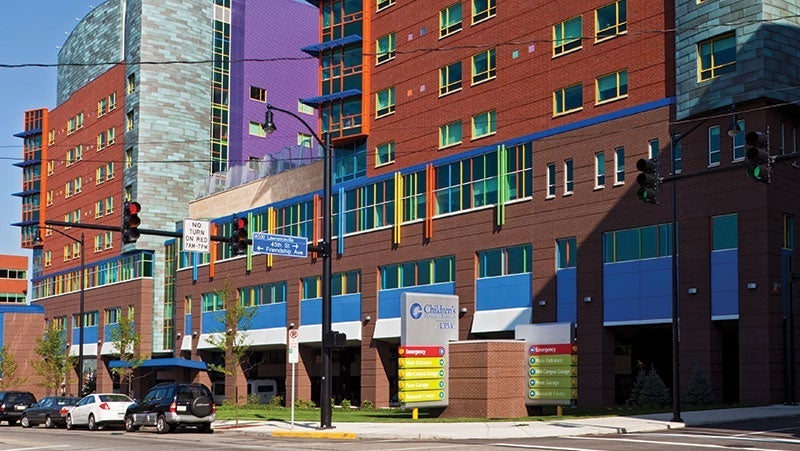Sustainability, color and dynamic design characterize Children's Hospital of Pittsburgh of UPMC. Occupying the former 10-acre site of an urban medical center, the facility features a 1.4 million-square-foot campus encompassing four distinct facilities anchored by the 13-story hospital and the 300,000 square-foot John G. Rangos, Sr. Research Center.

The primary goal of the hospital’s architects and designers was to provide a healing environment, an outcome that was further guaranteed by their ability to achieve LEED® certification. Among the patient-centered highlights of the building - designed by Pittsburgh-based Astorino - are colorful building materials; welcoming, child-friendly shapes; a state-of-the-art indoor air filtration system and a signature rooftop "Healing Garden."
The hospital also took advantage of its proximity to Pittsburgh based PPG, first, by incorporating environmentally progressive glass, coatings and paint from EcoLogical Solutions from PPGTM, and second, by using regionally sourced construction materials.
To help achieve their sustainability objectives, Astorino glazed portions of the building in two PPG products. The first, Sungate glass, combined a clear glass appearance with high levels of visible light transmittance and the added advantage of a low solar heat coefficient (SHGC). That means, in addition to permitting high levels of natural sunlight, the glass blocks a large percentage of the sun’s heat energy, which cuts energy consumption associated with air conditioning and other temperature controls.
The second product, Atlantica glass, which was chosen for its stunning emerald-green aesthetic, also supports the architects’ sustainability goals by blocking 65 percent of the sun’s heat energy while transmitting 60 percent of its natural light.
From an architectural standpoint, one defining element of Children’s Hospital is its brightly colored exterior, using vivid Coraflon coating colors such as yellow, green and various shades of blue. These colors exude a sense of cheerfulness, vibrancy and warmth, not just for people in the hospital but also to the busy city neighborhood that surrounds it.

Coraflon and Duranar fluoropolymer coatings were used to coat the storefronts, sunshades and exterior covers that are part of the curtain wall. In addition to their proven fluoropolymer chemistry and durability, both Coraflon and Duranar coatings are noted for their low maintenance requirements and exceptional color retention. As a result, the storefronts and sunshades will maintain their colorful good looks without experiencing the negative environmental impact associated with future re-paintings and re-coatings.
Inside the building, Astorino helped to create a healthy environment by installing low-VOC sealants, adhesives and floor coverings. Not coincidentally, PPG Pure Performance paint was used to coat most of the interior walls and trim.
Introduced by PPG in 2001, PPG Pure Performance paint was the world’s first premium-quality zero-VOC latex paint. That claim was substantiated later that year when it became the first product of its kind to earn Green Seal’s rigorous Class A certification. The designation meant that PPG Pure Performance paint met strict environmental requirements related to energy consumption, chemical composition and the absence of VOCs, as well as exacting standards for specific performance criteria, such as scrubbability, hiding power and washability.
For more information about PPG coatings and paint, call 1-800-258-6398.
